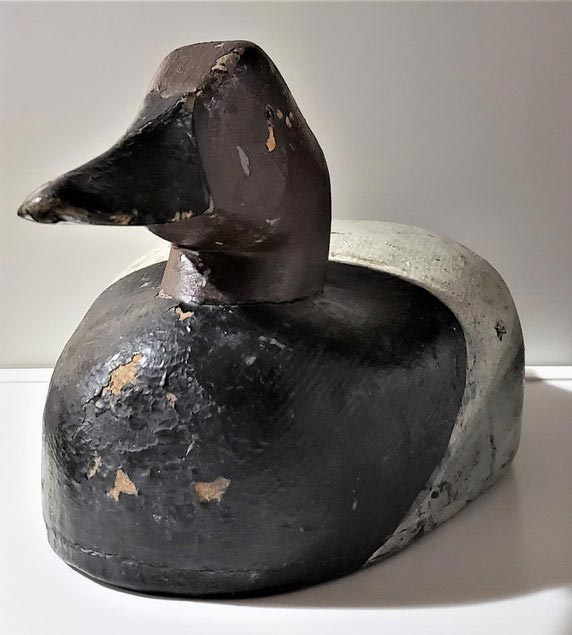The Importance of Original Paint
Why is "original paint" a controlling factor in the collectability of a decoy?
- Unlike most other forms of folk art, decoys were created as tools meant to be used in water. Unless a working decoy was treated kindly (doubtful), water tends to cause paint flaking, and with use, scraping and wear.
- In the Spring when hunting season ended, hunters often "refreshed" their decoys by repainting or repair.
- Today's collectors want decoys to be close approximations of the original. A decoy's desirability (and value) is determined by its maker, form, and condition. Since each decoy is unique, the ones in the best shape command the highest value. This also means that better examples today generally should appreciate the most.
Net: Always aim to acquire the best original condition decoys you can. Do not accept repainted or restored decoys unless you really want a specific example, or price is a factor. Over time, your best original condition decoys should increase in value the most because they are the ones collectors seek.
* * *
Note: Some areas retain few original paint decoys because their examples are very early, often 19th century, worked hard, and subjected to salty water concentrations. This is particularly true in the Southeast U.S. If your collecting interest is in this geographic area, seek out decoys in old working paint, preferably not modern restorations.
Modern Restorations
© Photos Courtesy of West Coast Decoys
Recent restorations in the style of the original

A working hunter repaint on the original paint pattern, showing flaking, perhaps to the original paint.